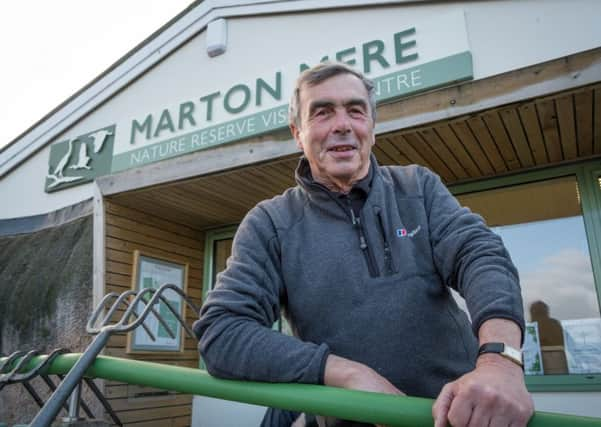Blackpool's hidden gem for wildlife


Off to the west there comes a squabbling, honking sound above the wind as a flock of 50 greylag geese coast in to land on the water.
Two tiny ducks, teal, rifle past skimming the surface and causing a group of 10 coot to raise their heads. On the far side, near the marching line of pale reeds a heron lopes lazily into the air and three shoveller ducks take flight.
Advertisement
Hide AdAdvertisement
Hide AdEven in winter there is always something to see at Marton Mere Nature Reserve, if you have the time to sit and stare.
Volunteer co-ordinator Rick Holmes points out a Cetti’s warbler darting between reed beds near the Fylde Bird Club hide, the closest to the visitors’ centre at the three mile by one mile site.
He has been organising the regular Thursday work party of volunteers who help maintain this site of special scientific interest right on the doorstep of urban Blackpool.
“We are a friendly team,” he says, “We welcome anyone who wants to come along and help, you don’t need any special skills and there are lots of roles, from working with the public in the centre, to getting out on the reed beds.
Advertisement
Hide AdAdvertisement
Hide Ad“We work closely with the Fylde Bird Club who are the people behind the founding of this reserve, and most of us are members of the club.”
Around 10 people are at Marton Mere today. Some in the centre putting together a history of the site, some getting their hands dirty cutting back reeds to maintain the habitat.
And what a habitat it is – hidden away on the edge of Blackpool. Reed beds, boggy meadows, scrubland, trees and one of only two stretches of natural open fresh water in the county formed as a glacial melt hole.
Len Blacow, president of the bird club, who together with Maurice Jones and others set up the club to fight for Marton Mere to be made into a nature reserve, says it is of regional importance.
Advertisement
Hide AdAdvertisement
Hide AdHe says: “We founded the club in 1982, 10 of us, but people had been bird watching and recording species here long before that.
“At the time there were various development plans for the area being proposed but we felt it should be an important wildlife site for the Fylde.”
The council extended Lawson tip, which ironically, was the saving of the area for wildlife since it kept people out.
The visitor centre is built on the old landfill site but you would never know.
Advertisement
Hide AdAdvertisement
Hide AdFrom the early days of no hides, to today with its large visitor centre, the site has come along way and it has become a vital home for some rare species.
Bittern, the brown camouflaged relative of the heron with its famous booming cry are winter residents, a range of wildfowl live on the water and the reed beds attract a host of warblers.
And there are regular sightings of rarities such as the arctic Ross’s gull, the laughing gull from the USA, the American bittern and night heron.
May is the time to visit, when the reserve is alive to the sound of sedge warbler and reed warbler, and a lucky visitor may see a passing osprey diving for rudd or tench.
Advertisement
Hide AdAdvertisement
Hide AdMaurice Jones says: “I started coming here in 1952 when the mere was a lot smaller. It was expanded around 1970. Now it is so much better. We want more people to know about it and come along to see the wildlife on their doorstep.”
Annie Heslop, Marton Mere project officer for the council agrees: “The volunteers have done so much work here. Now this year we are creating a new hide, the heron hide, named like all the others by the children at nearby Stanley Primary School, we are up grading paths, and have a huge series of events.
“We are hoping our sand martin nesting bank will attract its first nesters now that it has bedded in and we are developing our volunteering.”
The team is working with Blackpool and the Fylde College and Blackpool Sixth Form using their design skills and with Better Start and Head Start on the junior park ranger scheme for 10 to 16 year olds who otherwise might not have close contact with nature.
Any groups or individuals interested can go to the centre or take part in its next event – March 3 for World Wildlife Day from 10am to noon. Or email [email protected].